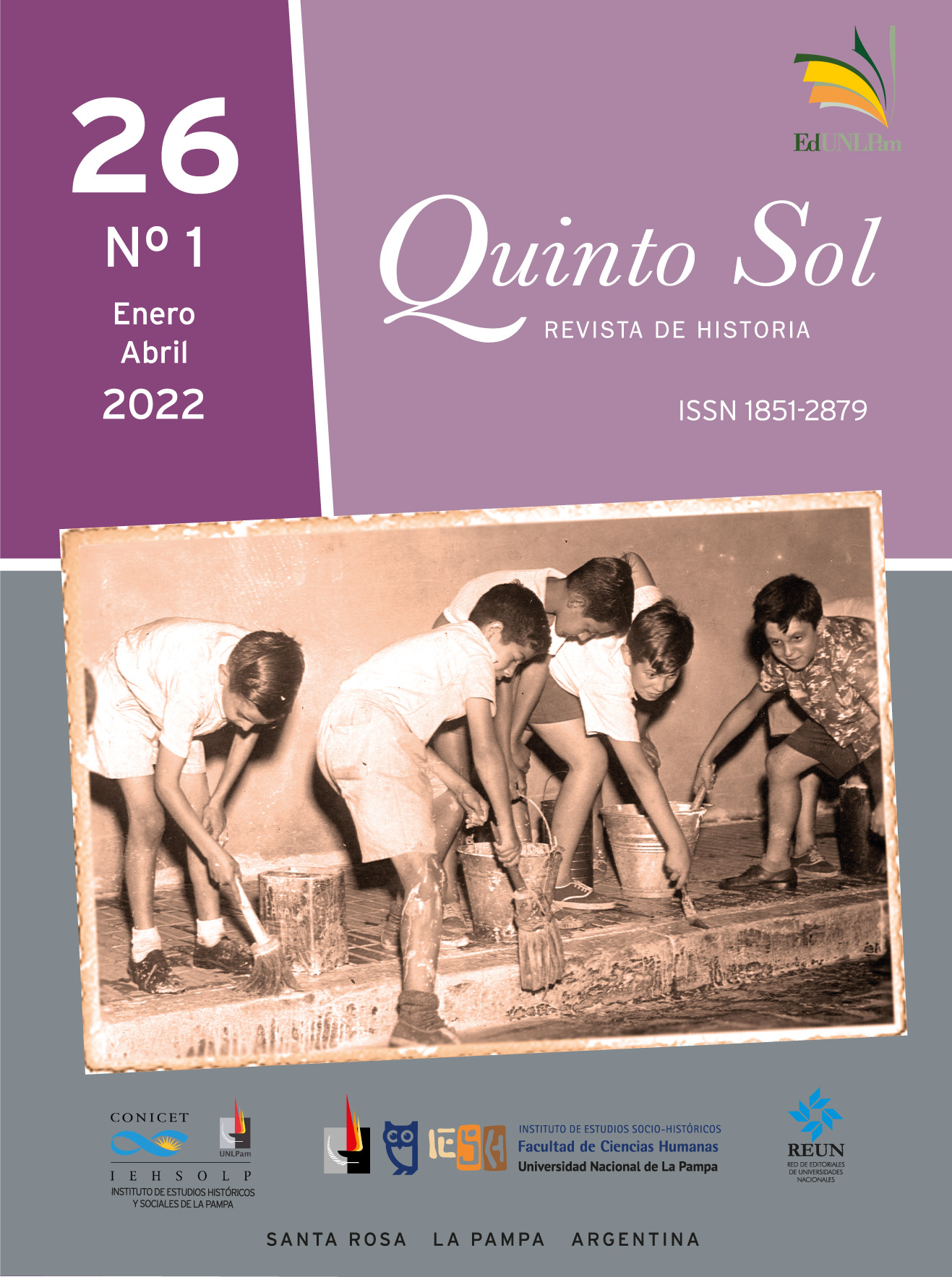Between the Gran Acuerdo Nacional and Trelew: Scopes and meanings of the concepts of national socialism and Peronism
DOI:
https://doi.org/10.19137/qs.v26i1.5597Keywords:
peronist left, national socialism, PeronismAbstract
This paper analyzes the conceptions about national socialism and Peronism that different referents of the Peronist left presented in a round table cycle held in September 1972. An approach close to the theoretical-methodological proposal elaborated by Reinhart Koselleck for the study of political concepts is tested to allow to recover the contingent and changing dimension of the political ideas that predominated in the debates of the Peronist left at the beginning of the 1970s, and that makes it possible to inquire about the connections between Peronism and socialism that occurred during the period.
Downloads
References
Amézola, G. de (1999). El caso del realismo insuficiente. Lanusse, La Hora del Pueblo y el Gran Acuerdo Nacional. En A. Pucciarelli (Ed.) La Primacía de la Política. Lanusse, Perón y la Nueva Izquierda en tiempos del GAN (pp. 57-116). Editorial Universitaria de Buenos Aires.
Bartoletti, J. (2011). Montoneros: de la movilización a la organización. Laborde Editor.
Baschetti, R. (1995). Documentos 1970-1973. Volumen I: De La Guerrilla Peronista al gobierno popular. De la Campana.
Bozza, J. (2001). El peronismo revolucionario. Itinerario y vertientes de la radicalización, 1959-1969. Sociohistórica, 9-10, 135-169. https://www.sociohistorica.fahce.unlp.edu.ar/article/view/SHn9-10a05
Bozza, J. (2010). Una voz contra los monopolios CGT. El periódico de la CGT de los Argentinos. Oficios Terrestres, 25 (15), 83-94. http://sedici.unlp.edu.ar/handle/10915/45371
Campos, E. (2016). Cristianismo y revolución. El origen de Montoneros. Edhasa.
Caruso, V., Campos, E., Vigo, M. y Acha, O. (2017). Izquierda peronista: una categoría útil para el análisis histórico. Historiografías, 14, 68-90. https://doi.org/10.26754/ojs_historiografias/hrht.2017142337
Dawyd, D. (2014). Corrientes y nucleamientos del sindicalismo opositor peronista. Entre la CGT de los Argentinos y el regreso de Perón, 1970-1973. Quinto Sol, 18 (2), 1-21. https://doi.org/10.19137/qs.v18i2.937
Gil, G. (1989). La izquierda peronista (1955-1974). Centro Editor de América Latina.
Gillespie, R. (2008). Soldados de Perón. Historia crítica sobre los Montoneros. Sudamericana.
González Canosa, M. (2017). “Libres o muertos, jamás esclavos”. Marxismo, peronismo y lucha armada: las Fuerzas Armadas Revolucionarias en la Argentina de los primeros setenta. Tempo e Argumento, 22 (9), 364-395. https://doi.org/10.5965/2175180309222017364
Koselleck, R. (1993). Futuro Pasado. Paidós.
James, D. (1976). The Peronist Left 1955-1975. Journal of Latin American Studies, 8 (2), 273-296.
James, D. (1990). Resistencia e integración. El peronismo y la clase trabajadora argentina 1946-1976. Sudamericana.
Lanusse, L. (2010). Montoneros. El mito de sus 12 fundadores. Zeta.
Nahmías, G. (2013). La batalla peronista. De la unidad imposible a la violencia política (Argentina 1969-1973). Edhasa.
Needham, R. (1975). Polythetic Classification: Convergence and Consequences. Man, 10, 349-369.
Otero, R. (2019). Montoneros y la memoria del peronismo. Prometeo.
Perón, J. D. (2017). La hora de los pueblos/Latinoamérica: Ahora o nunca. Biblioteca del Congreso de la Nación.
Pittaluga, R. (2006). La memoria según Trelew. Sociohistórica, 19-20, 81-111. https://www.sociohistorica.fahce.unlp.edu.ar/article/view/SHn19-20a04
Pittaluga, R. (2016). La inteligencia obrera. Notas sobre la experiencia política de los trabajadores en los años ’70. Cuadernos LIRICO, 15, 1-15.
https://doi.org/10.4000/lirico.2845
Raimundo, M. (2000). Compañero y los orígenes del Peronismo Revolucionario. Sociohistórica, 8, 203-226. https://www.sociohistorica.fahce.unlp.edu.ar/article/view/SHn08a07
Raimundo, M. (2004). Izquierda peronista, clase obrera y violencia armada: una experiencia alternativa. Sociohistórica, 15-16, 99-128. https://www.sociohistorica.fahce.unlp.edu.ar/article/view/SHn15-16a04
Slipak, D. (2015). Las revistas montoneras. Cómo la organización construyó su identidad a través de sus publicaciones. Siglo XXI.
Williams, R. (1994). Sociología de la cultura. Paidós.
Downloads
Published
Issue
Section
License
When submitting their contributions, authors must declare that they have the permission of the file or repository where the documents that are attached to the work were obtained, whatever their format (unpublished manuscripts, images, audiovisual files, etc.). Such permission authorizes their publication and reproduction, releasing the journal and its editors from any liability or claim from third parties.
Likewise, authors must adhere to the Creative Commons license called "Attribution - Non-Commercial CC BY-NC-SA", through which the author allows copying, reproducing, distributing, publicly communicating the work and generating derivative works, as long as the original author is properly quoted and acknowledged. It is not allowed, however, to use the work for commercial purposes. Authors may establish additional agreements for the non-exclusive distribution of the version of the paper published in the journal (for example, placing it in an institutional repository or publishing it in a book), with the acknowledgment of having been published first in this journal.
The publication of content in this journal does not imply any royalty or charge for taxpayers.
Quinto Sol adheres to the DORA (Declaration on Research Assessment) signed in San Francisco, California, on December 16, 2012, and to the Declaration of Mexico (Joint Declaration LATINDEX - REDALYC - CLACSO - IBICT).










4.png)
2.png)












_(2).png)


1.jpg)



1.jpg)





